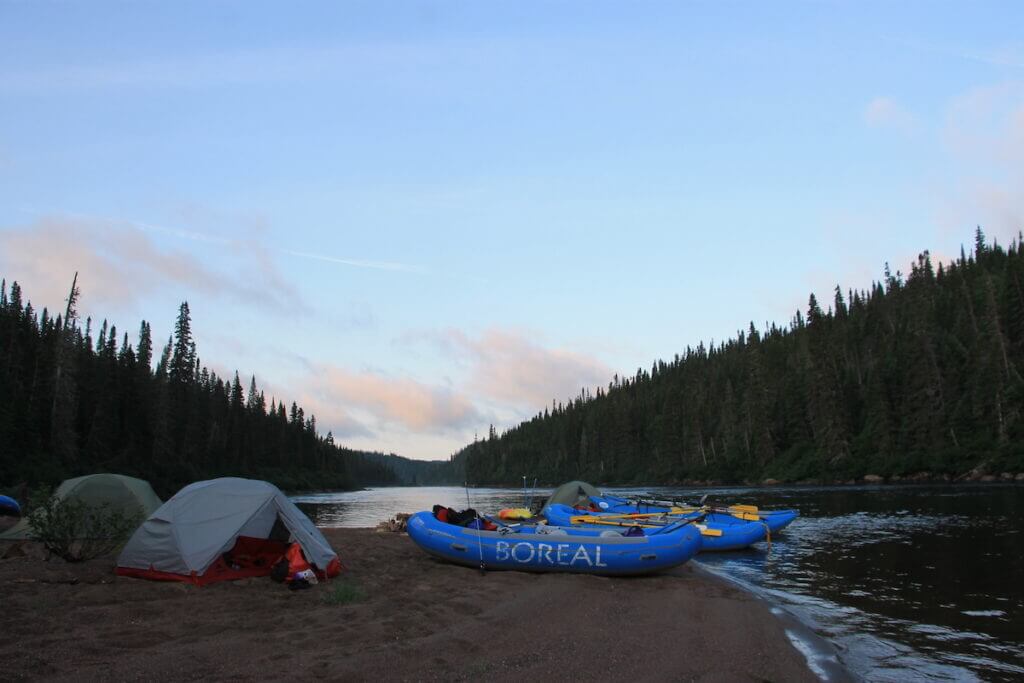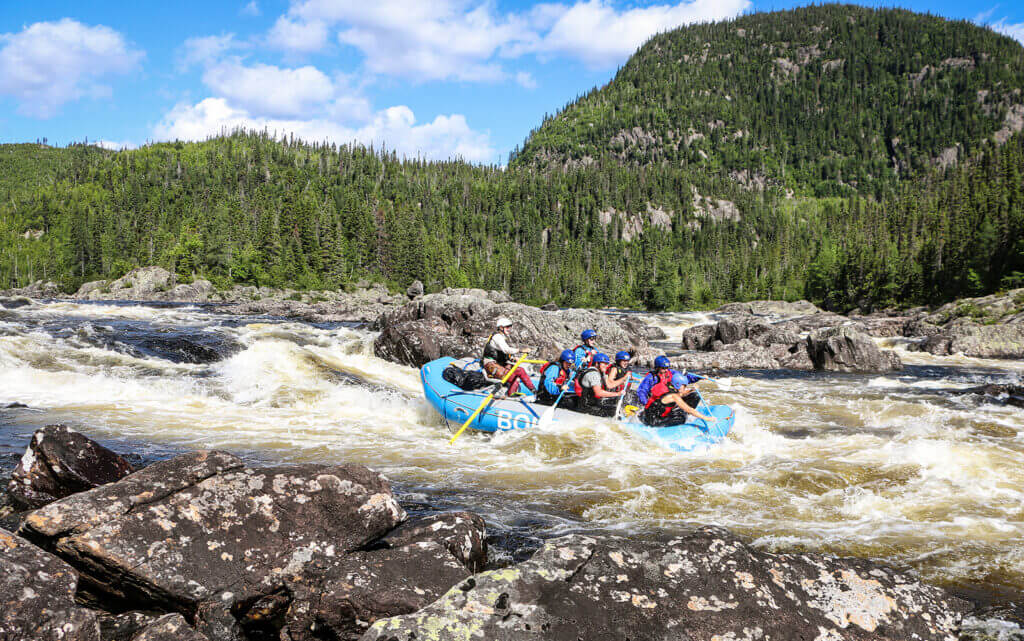3 common myths about rafting trips
We love the thrills, but what’s even more incredible about rafting is how it opens some of the world’s most spectacular places to people of all experience levels.
By Danny Peled, Boreal River

In eastern North America, a lot of people think that rafting just isn’t for them.
When you hear about rafting you might think “that sounds horrible,” or “but I’m a canoeist,” or simply “yikes!” Or maybe you can’t envision how a multi-day raft trip would work.
These reactions are no surprise. In Canada, the canoe is embedded in our history and culture, and many people associate rafting with a wild ride full of sunburns and irresponsible behaviour.
The truth is that some of the most amazing places in the world are only accessible on river trips, and rafts are the ideal vehicle for certain places (and paddlers). With good guides, rafts can be comfortable and fun. A multi-day rafting trip can be the best way to travel, relax, and truly experience the natural world.
Myth #1: Rafting trips are big and rowdy
I used to believe this myth. I grew up as a proud canoeist and had a hard time seeing any upside to a big inflatable raft. I started guiding in Canada, and I liked it so much I wanted to work year round, which meant heading south to Mexico, Costa Rica, and Chile, where I learned to love rafting and to see its potential.
Compared to Canada, rafting is much more popular in other countries for both day trips and multi-day trips. Rafts make the river more accessible. First-timers can hop in, and with a good guide, be on the river in no time. Guides can adapt the difficulty of the descent to match the group. We can choose more aggressive ‘lines’ for those who want a challenge, or we can pick out a controlled descent when accidental swims would be dangerous (more on this below).
As I got more guiding experience, I learned how versatile a raft can be. While the one-day wild ride might be something we’ve seen from the highway, there are operators who use rafts to make rivers more accessible to more people and to access nature.

The nights I spent at eco lodges in Costa Rica on multi-day raft trips showed me that rafting doesn’t have to be big or rowdy. Once you find the right river, like Quebec’s Magpie (one of our favourites), it can be the perfect combination of fun, challenging, accessible … and beautiful.
My perception of rafting has changed a lot since my first guide course. These days, my typical rafting trip has 3-4 guides and no more than 10 people.
And while we’re fun folks—we’re far from yahoos.
Myth #2 – Rafting is always scary
In the early 90’s, my parents went rafting on the Rouge River near Montreal with a group of friends—and they all came back horrified. They thought one of their friends had almost drowned.
Unfortunately, in the 80’s and 90’s (and still today in some places), some companies tried to make their trips seem as risky as possible. Guides would flip intentionally—tossing everybody into the water for long swims through rapids—sometimes multiple times a day.
At the time, I hadn’t yet paddled whitewater, and I took my parents at their word that the trip was wild and dangerous. As it turns out, thousands of people go down the Rouge River every summer and while there are risks—these can be well managed by professionals.
Here’s the thing: rafts are super stable. They’re self-bailing so they don’t get “swamped” (full of water), and they can be steered effectively by an experienced guide.

In a raft, eager paddlers can sit up front and paddle into big waves—but those who want more stability can sit comfortably in the middle of the raft.
In rafts, we can work with all kinds of people, from those with physical challenges, to nervous or non-swimmers, to youth. Supporting people of all backgrounds to enjoy the river is one of the most rewarding aspects of guiding.
Also, many multi-day rafting trips bring along kayarafts (inflatable kayaks) and standup paddleboards (SUPs), so those who want to ramp up the challenge can paddle solo and dive into learning more whitewater techniques. Those who want to take it easier can stick to the guided rafts for the rapids and try the solo crafts on calm sections—for some peaceful ‘alone time’ with the river.
Myth #3 – Whitewater is unpredictable
This might be one of the most pervasive myths in our industry, but as water flows downhill, it follows rules and patterns. As you learn how to ‘read’ the river you discover that whitewater is, in fact, 100% predictable.
We can’t control the current: it’s powerful and demands our respect. Once we learn to read the river, a teachable skill that comes with experience, we can make great decisions. Experienced paddlers understand how waves, rocks, and currents will impact their boats.

There’s also an international whitewater classification system to rate river difficulty from a scale of Class 1 (short, easy rapids with some waves) to Class 6 (Niagara Falls).
So when you’re choosing a trip, you can gauge what you’re getting into by choosing, for example, the Nahanni (class I & II), the Magpie (mostly class III and ‘III+’), or the Futaleufu in Chile (class IV & V).
When we’re running rivers that we know well, we always know what’s coming up. If we’re not sure, we can get out and ‘scout” to read the rapids from shore.
One of the fun things about a river trip is we can dial-down or ramp up the excitement once we’ve fully thought through the consequences and our goals.
It’s about so much more than just rapids.
Now that we’ve discussed the myths, you can see that a raft trip can be a small-group journey with whitewater as a fun component. I also want to emphasize that the whitewater is just that: one component.

Yes, we love the thrills, but what’s really incredible about rafting is the way it opens up some of the world’s most special places—rarely-travelled and spectacular – to people of all experience levels.
Rafting is a way to access nature and share magical moments with others. That’s really what it’s all about for me.

